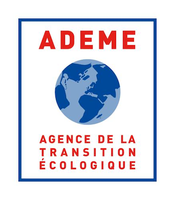Search eceee proceedings
Stakeholder support in early decision phase for positive energy districts
Panel: 5. Towards sustainable and resilient communities
Authors:
Gerhard Hofer, e7 Energie Markt Analyse GmbH, Austria
Gerhard HOfer, e7 energy innovation & engineering, Austria
Klemens Leutgoeb, e7 energy innovation & engineering, Austria
Margot Grim-Schlink, e7 energy innovation & engineering, Austria
Alina Stipsits, e7 energy innovation & engineering, Austria
Abstract
INTRODUCTION
Positive Energy Districts (PED) are a piece of the puzzle for the goal of carbon neutrality in the coming decades. PEDs are contributing to the ambitious targets of the European Strategic Energy Technology Plan. The goal is to deploy 100 Positive Energy Neighbourhoods by 2025.
An important stakeholder is the administration and the political representatives of a city or municipality. They are involved at the very beginning of site development and are the ones who can set requirements for the energy performance of buildings and mobility and type of energy carrier through instruments such as zoning plans, development plans or building regulations.
The first steps towards plus-energy districts were taken in the city of Melk, which is a small town with around 6,000 inhabitants situated in the UNESCO world heritage of Wachau. Two individual sites were examined by means of spatial energy analyses, calculation of energy need and potential renewable energy supply. Possible approaches to set legal binding requirements were analysed. Through the active participation of the city of Melk as well as the property owners and developers involved, acceptance is to be ensured as a preparation for implementation and a concept for PEDs that is as practical as possible.
METHOD
Stakeholders in the context of neighbourhood development, especially the municipality, need a long-term perspective on the planning and construction of a district. After all, such a process takes around 10 to 20 years and needs to be planned far ahead. A roadmap in relation to Positive Energy Districts is therefore helpful.
Existing roadmaps were analysed to define support for PED development: the "Smart City Guidance Package" helps with a broader scope. This package is aligned with the UN Sustainable Development Goals. In "Co-Creation of Positive Energy Blocks", more attention is paid to the development process and the involvement of residents. The "Guidelines for Positive Energy District Design" covers the scope well and focus on the planning process. A good quality mapping of the process from start to operation of a Positive Energy District is provided by the Cities4ZERO initiative, which was used as the basis for the Roadmap for Positive Energy Districts.
ROADMAP
This PED roadmap consists of the stage’s strategy and initiation phase, planning phase and implementation phase up to operation. In addition to these phases, individual steps are concretely defined and presented in a specific order. In early development phase, steps from strategy phase are relevant: 1. Set PED vision, 2. Engage people, 3. Analyse relevant data, 4. Set up working groups, 5. Formulate specific objectives, 5. Define acition plans, 7. Integrate in general administration work. This sequence is not always followed according to the proposal. In different settings, the series of steps can be adapted accordingly.
For the city of Melk, the objectives, the participants and the measures were defined for each of the individual steps, so that the roadmap can be used as a guide for future action.
CONCLUSION
It is important to inform relevant stakeholders in the cities at an early stage about the dimensions and steps of the development of PEDs. At the same time, it must be mentioned that current urban development areas have no other option than to become energy and climate neutral. In the field of urban development, long-term planning is needed; decisions are being made now for the next 20 years.
The early involvement of stakeholders is the key to successful implementation. By designing an active participation process, fears and resistance can already be reduced in the first steps and a common goal can be achieved.
AKNOWLEDGEMENT
This extended abstract was developed in the project “PED-ID”. This project has received funding from the European Union’s Joint Programme Initiative Urban Europe programme.
Panels of
1. Dynamics of consumption: less is more?
2. Efficiency and beyond: innovative energy demand policies
3. Policy, finance and governance
4. Monitoring and evaluation for a wise, just and inclusive transition
5. Towards sustainable and resilient communities
6. Energy-efficient and low-carbon mobility for all
7. Policies and programmes for better buildings
8. Innovations in products, systems and building technologies



























